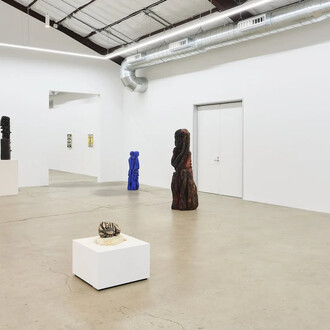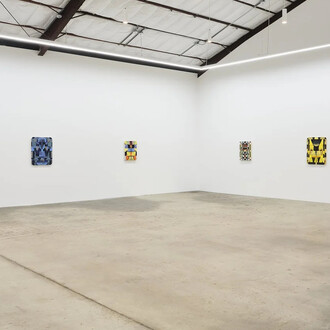The Pit is delighted to present a survey of paintings by James Hayward, spanning from the 1960s to the present. Hayward is a key but under-recognized figure in the history of painting on the West coast, known for his sumptuous use of color and surface. Foregrounding process and materiality in various ways, Hayward has made a substantive contribution to the tradition of monochromatic painting. This exhibition highlights his recurring approaches over the decades, including new additions to his oeuvre and will be on view August 10 - September 14, 2024 at The Pit Los Angeles with an opening reception and 10-year anniversary part on Saturday September 14 from 4-7pm.
Through much if his work spanning five decades, Hayward has used automatic painting and formal systems to drive the tension underneath its placid and riptide surfaces. This has enabled him to focus exclusively on making “good marks,” which for him, are the ingredients to all great painting. His method of making good marks has been to limit the vagaries of his hand and eye from the process itself. This entails him instilling a measuring system to guarantee that no brush stroke supersedes the other in terms of quality or impact, enacted in his numbered Abstract series in which an imaginary grid guides his brush: by shifting the grid’s vertical and horizontal ratios as he works, he ensures an even dispersal of brushstrokes—an egalitarian approach to painting’s smallest unit of manual labor. Yet in so doing, he avoids a merely procedural and rote situation by foregrounding the chromatic allure of his chosen pigment; and then blurs the line between his formal systems and bodily expression, which unexpectedly creates an urgent aesthetic fusion.
In his flat monochromes, such as Neutral gray, 1976, he removes traces of his marks by subsuming them into a unified field of emptiness—the other side of the same coin in relation to the Abstract series. Which is to say, the marks he made exist, but are so evenly blurred they cannot be seen by the naked eye. In a sense, Hayward has disappeared his own hand, even though it is in the work. And unlike the Abstract series, which have an almost sculptural surface quality, they convey immeasurable depths through the transparent layers. Such richness can also be found, through chroma and scale alone, in The ecstasy, 2000 whose structure came from Bernini’s 17th century sculptural altarpiece, The ecstasy of Saint Theresa. Hayward interpreted Bernini’s divine imagery into a distribution of vertical panels of various widths cut from black ebony; on them he painted complex mixtures of colors befitting Theresa’s ecstasy and our own optical pleasures of color.
Such pleasures have been surely enacted by Hayward in his latest series of Tondos (2022-present), in which he has focused on ultramarine blue—in use since the 6th century—making it one of the oldest blue pigments on earth. Unlike his previous works executed with a brush, Hayward has used his feet to maneuver the paint as his body is suspended above the wood support. Instead of the support spinning, it is the artist himself, using his entire body in ways the arm, hand and brush cannot fathom. In so doing, he continues to widen the limits of his body, his practice, and the monochrome itself.
Informed by disparate sources such as the Italian renaissance, conceptualism, automatism and modernist tropes, Hayward has created a substantive and idiosyncratic contribution to the tradition of monochromatic painting.












